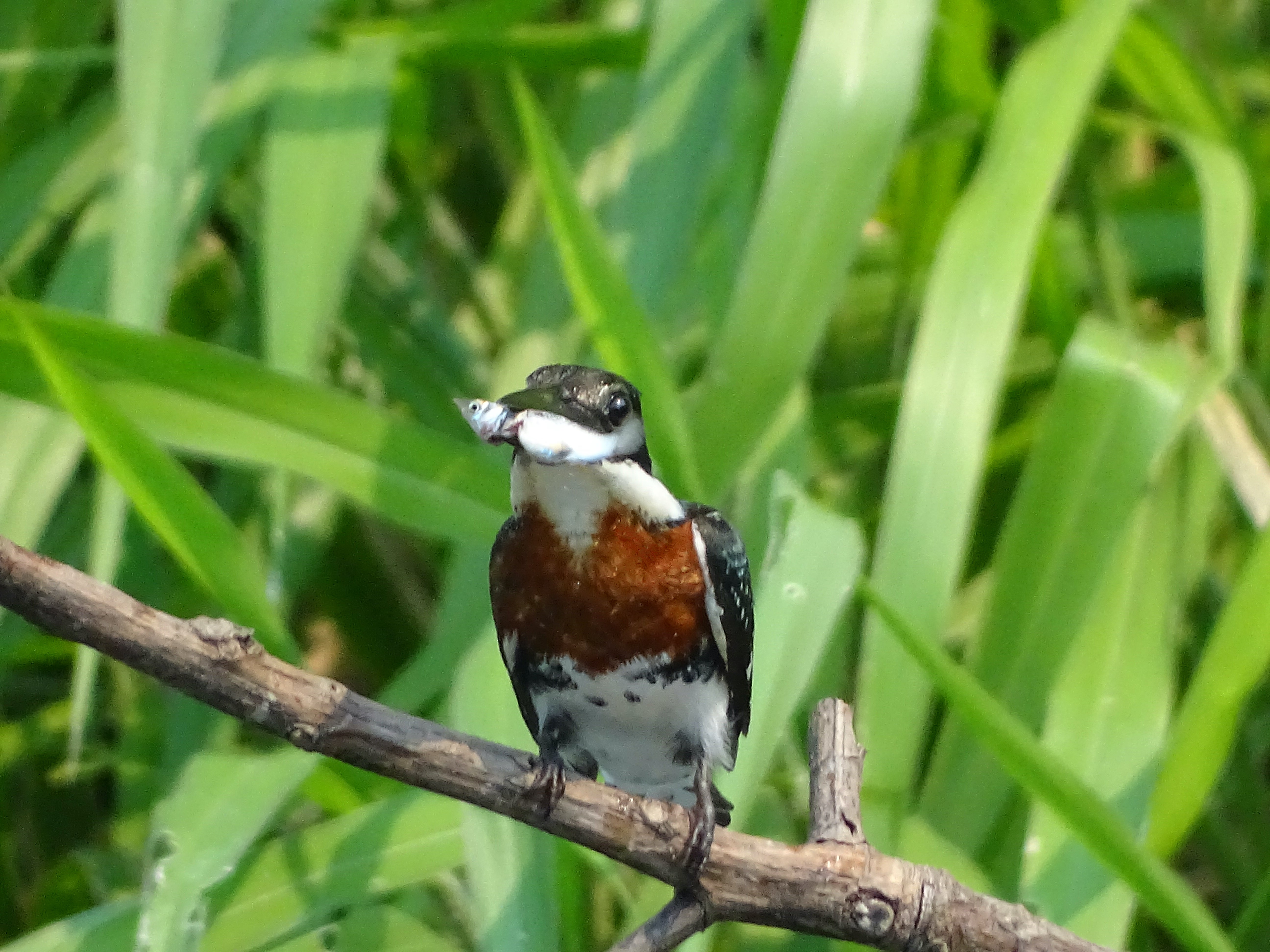Although the jungles of southern Mexico seem like an ideal spot for fieldwork, the region’s sulfur springs are far from a tropical getaway. In addition to the area’s stifling heat, the pools reek of rotten eggs. Their milky, turquoise water is even more inhospitable: it is laced with toxic levels of hydrogen sulfide and contains very little oxygen.
These hellish backwaters, however, serve as the stage for a remarkable display—tens of thousands of fish moving in unison like sports fans doing the wave across a stadium. “It’s mesmerizing—you can stand there literally for hours and just let your mind flow while they do their waves,” says Juliane Lukas, a researcher at Berlin’s Leibniz Institute of Freshwater Ecology and Inland Fisheries (IGB).
But these pulsating waves are not just captivating. In a study published on December 22 in Current Biology, Lukas and her team identified the pulsating waves as one of the first examples of a collective behavior meant to directly stymie a predator.
The performers behind these waves, which can last for minutes at a time, are sulfur mollies (Poecilia sulphuraria), a slight, silver fish less than five centimeters long. Endemic to these harsh sulfur streams, these fish spend most of their time near the water’s relatively oxygen-rich surface. Space is limited, so the sulfur mollies must get cozy—in some spots, there can be well more than 2,000 mollies per square meter.
Wave behavior of sulfur mollies seems to a defense against predatory birds. Credit: Juliane Lukas
To create their waves, the masses of sulfur mollies move in sync. The fish appear to gracefully zigzag across the pond, but they actually remain in place. Each fish dives down and splashes its tail at the surface. This causes its neighbors to do the same until a wave cascades across the water. Jens Krause, another researcher at IGB, compares this illusion of motion to falling dominoes. “The dominoes don’t go away, but your eyes will follow the wave of the dominoes’ movement.”
Although the mollies’ penchant for making waves had long been known, the purpose of this behavior had evaded researchers. To learn more about the enigmatic behavior, Lukas, Krause and their colleagues braved harsh conditions to observe the sulfur molly waves up close. They quickly noticed that they were not the only ones looking at the mollies. The massive throngs of fish attracted a slew of piscivorous birds, including herons, kingfishers and large flycatchers known as kiskadees. “It’s like an open buffet for the birds,” Lukas says.
And the birds seemed eager to partake, swooping down so frequently that the team sometimes observed several attacks per minute. But although picking off the surface-bound swimmers should be as easy as snagging fish in a barrel, the researchers hypothesized that the mollies’ synchronized actions may be a defense mechanism.

To determine whether the waves bothered the birds, the team set up perches around the springs to give kingfishers and kiskadees prime real estate to launch their attacks. The researchers then trained cameras on the diving birds and recorded the subsequent wave action. Whereas kingfishers would plunge into the water to pursue a molly, kiskadees would only skim the water’s surface with their beak, sparking fewer waves in response. To gauge the impact of fish waves on the kiskadees, the researchers launched pebbles with slingshots to trigger the mollies.
Their findings illustrate that synchronized waves had a profound impact on both kingfishers and kiskadees. When waves pulsated across the spring, the birds waited twice as long between attacks, substantially reducing the frequency of strikes. The waves also appeared to make it more difficult for kiskadees to successfully nab a molly, and both birds often changed perches in response to the waves, possibly searching for a different angle of attack.
Although the impact of the waves was clear, their actual effect on the birds was more difficult to parse. The team hypothesizes that the rippling motion, which is often directed away from an approaching bird, may befuddle the predator. The fish may also be sending a warning signal to the birds, alerting them that their approach has been detected. Oddly, this may help out both parties, according to Krause. “For the fish, they don’t have to swim away to stop the bird from attacking,” he says. “And the bird benefits because if the fish let it know that it has been detected, it knows to move somewhere else.”
Whatever the mechanism is, the research team believes this is one of the first examples of a collective behavior being directly linked to reducing the efficiency of a predator. According to Bertrand Lemasson, a biologist who studies collective behavior in animals such as zebrafish at the U.S. Army Engineer Research and Development Center in Newport, Ore., these interactions between predator and prey are challenging to study in the wild, making the sulfur springs in southern Mexico an intriguing setting for exploring this relationship. “The fish being forced to stay at the surface really puts them at an interface with the birds,” says Lemasson, who was not involved in the study. “These boundaries are always interesting places in ecology because that’s usually where you see the most interactions.”
Lukas, Krause and their colleagues believe many other creatures may employ similarly synchronized movements in more complex systems, such as starlings dodging falcons or sardines swerving away from dolphins. As the sulfur mollies illustrate, teaming up is an effective way to stay off the menu. “We love these collective patterns of bird flocks, fish schools, herds of antelope. But you often wonder, ‘What is the relevance of these beautiful patterns?’” Krause says. “And I think this study shows it quite strongly it decreases mortality in these animals.”
